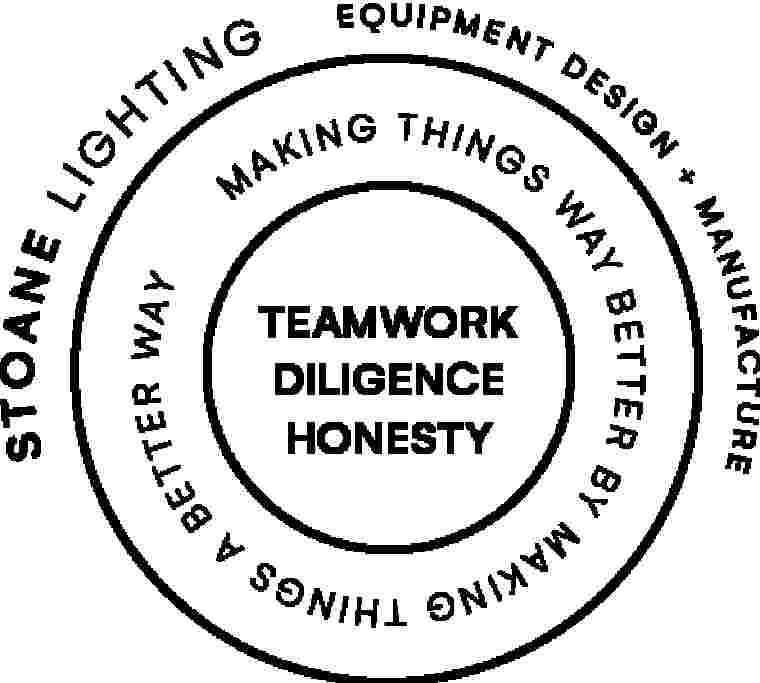ILP Lighting Journal February 2023: Changing Climate Change


"The increasing urgency of the climate crisis requires everybody to act now and change the way we produce and consume. Metrics and tools such as CIBSE’s TM66 can now provide a valuable route map for lighting professionals."
Written by Dr. Irene Mazzei.
Since the start of the last century, unregulated human activities have contributed to the emission of large amounts of greenhouse gases (GHGs) into the atmosphere.
These can absorb radiation, with the result of making the Earth’s surface warmer ('Global Warming Phenomenon’, GWP).
Climate models have predicted that a scenario corresponding to the lowest allowed temperature variation (+ 1.5 °C) is only achievable through a decrease of CO2 emissions, targeting net zero by 2050 [1], which was the target set in 2015 with the Paris Agreement.
The latest report by the UN Climate Change Committee shows that, despite some initial positive outcomes, the efforts to limit global temperature increase are still insufficient [2].
These alarming findings are pushing policymakers to take urgent action in implementing sustainability strategies to control and reduce the level of emissions.
Within the framework of the European Green Deal, initiatives are being put in place with the aim of reducing the emissions of various sectors, such as energy, transport and industry [3].
A common strategy to tackle the sustainability aspect of products and services, adopted by businesses, involves the use of environmental labels to assess the performance of specific aspects of a product. However, the current fragmentation of measuring and reporting methodologies is not helpful to the cause.
In addition to this, the present legislative landscape may allow companies to provide a false impression of their environmental footprint, thus falling into greenwashing.
The upcoming ‘Environmental performance of products & businesses – substantiating claims’ programme by the European Commission will require companies to substantiate their green claims against a standard methodology, with the aim of making claims more reliable and verifiable across the EU [4].
What can we quantify?
Lighting is not excluded from this picture, as it accounts for 5% of the global GHG emissions [5]. A transition to a more sustainable lighting sector has already started, with the upgrade of the energy efficiency of light sources. However, there is still room for improvement to be made in the manufacture of lighting products. In this context, assessment methodologies can be used, not only to quantify the environmental impact, but also to draw comparisons and drive changes and development towards more sustainable products and company practices.
Whilst several technical aspects can be measured and compared consistently within the industry (for example colour temperature and luminous efficiency), and the aesthetic of the product is defined by the manufacturing style and design decisions, sustainability is a different matter.
The environmental impact of a product defines the totality of the effects that its production and use have on ecosystems, atmosphere and humans. The embodied carbon of a product refers to the GHG emissions (expressed in kg CO2 equivalents) associated with materials, manufacturing and disposal.
It is also crucial to consider the product’s longevity. A 'low-impact' product should aim for a low embodied carbon value and long lifetime. All these aspects are interconnected, as shown in figure 1.
Strategies to keep the product in use for as long as possible need to be introduced upstream, during the design stage, and will affect the environmental footprint of a product, as will company policies and practices aligned to the principles of the circular economy. All this needs to happen without negatively influencing technical performance and appeal.
And how do we do it?
Manufacturing products using recycled materials, providing extended warranty, spare parts and disassembly information, manufacturing locally and implementing durability and re-use options in the design stage are only some of the aspects evaluated in the Circular Economy Assessment Method (CEAM-Make) described in CIBSE TM66 - ‘Creating a circular economy in the lighting industry' by CIBSE's lighting division, the Society of Light and Lighting (SLL) [6].
A total of 72 questions extensively covering aspects regarding product design, materials, manufacturing and ecosystem are included in the methodology, to draw a picture as complete as possible of the circularity of a product and the company practices to support it.
To ensure transparency and consistency, answers to the questions are required to be accompanied by evidence. The information provided is assessed through CEAM-Make and points assigned to each answer, to be finally converted into a score system ranging from 0 to 4.
Low scores correspond to poor circular economy performance and indicate that the product could benefit from changes to be more aligned with circular economy practices. Higher scores denote good or excellent circularity, with a score of 4 representing a perfectly circular product (in other words, scoring maximum points in each question).
This assessment method has the power of converting a highly complex subject into an easy to understand (and compare) scoring system.
In addition to CEAM-Make, 'CEAM-Specify' allows designers and specifiers to quickly compare two or more products. TM66 also provides practical guidance for the development of a circular, sustainable approach to lighting.
Soon to be released, the TM66 Circular Economy Assured scheme set up by CIBSE and the Lighting Industry Association (LIA) will provide an objective quality mark for the circularity of lighting products.
The GHG emissions (expressed as kg CO2 equivalents) related to production, distribution and end‑of‑life (EoL) treatments of a product can be addressed too as embodied carbon.
CIBSE’s TM65 - 'Embodied carbon in building services: a calculation methodology' was created with the objective of bridging the gap between mechanical, electrical and public health (MEP) industry and environmental impact quantification [7]. It provides (i) guidance on how to calculate the embodied carbon of MEP products, (ii) a consistent data collection approach and (iii) consistent embodied carbon calculation and reporting methods.
The TM65 calculation methodology accounts for the embodied carbon produced during the life cycle of a product, from the material sourcing, manufacturing and distribution through repairing or replacing components in the product during its use, to the waste transport, processing and disposal, according to the ‘cradle to grave’ approach.
In the embodied carbon account, the energy consumed by the product during its use and any benefits or burdens provided by reusing or recycling practices after the end of life are excluded.
TM65 provides two levels of calculations: a basic one, to be used in the absence of detailed data, and a mid-level calculation, which requires more data from the manufacturer but provides more detailed and accurate results.
It is important to bear in mind that the results obtained with these methodologies should not be compared with the embodied carbon results extrapolated from an environmental product declaration (EPD).
As the authors of TM65 state, EPDs should remain the preferred form of environmental communication and TM65 should be used when EPDs are not available.
Furthermore, with an EPD, other impact categories in addition to the GWP (from which embodied carbon values can be extrapolated) can be quantified, providing a complete environmental impact assessment of a product.
EPDs are Type III environmental communications and, by definition, they represent quantified environmental information obtained through life cycle assessment (LCA) analysis and verified by a third-party organisation.
The EPD practice is defined by standards such as ISO 14025:2006 (and EN15804+A2 for the built environment). Other standards (ISO 14040:2006 and 14044:2006) and product category rules (PCRs) exist to limit LCA result variability that could be associated with assessors’ choices, due to the high flexibility allowed by the methodology.
In addition to the life cycle stages mentioned for TM65, the LCA approach also includes the quantification of the impacts associated with the in-use phase (for example electricity consumption throughout the lifetime of a light fitting) and with reuse, recycling or repurposing practices beyond the life cycle of the product.
EPDs are published from the results of an LCA analysis through programme operators, which provide validation, recognition and visibility.
An example of a European programme operator specialised in electrical and electronic equipment (EEE) is 'PEP Ecopassport' [8]. An important initiative involving PEP Ecopassport and LightingEurope has the objective of updating their product specific rules (PSRs) for the luminaire family, to be used in addition to PCRs [10] for electric and electronic products [9].
Thanks to PSRs, various aspects of a specific family of products can be included consistently and unambiguously in the analysis, which ensures a more accurate comparison of results between EPDs and allows the industry to move closer to a harmonised LCA approach for lighting.
SUMMARY: A MORAL (AND, PERHAPS SOON, LEGAL) OBLIGATION
The increasing urgency of the climate crisis requires everybody to act now and change the way we produce and consume.
The use of environmental metrics for the quantification of the impact of products and services is of fundamental importance to assign a number to the impact of our actions and choices, but also to drive business decisions.
It is of crucial importance that the whole lighting community collaborates with the same objectives in mind. These need to be:
- (i) specifying and designing lighting products only where and when needed, keeping in mind the requirements for low-impact products,
- (ii) manufacturing adopting sustainable materials and processes,
- (iii) increasing the longevity of products by keeping them in use for as long as possible, through reuse, repurposing, repairing and remanufacturing, and
- (iv) adopting responsible end-of-life policies, when the final disposal of a product is unavoidable.
The approach to environmental metrics may be confusing at first, but the introduction of easily accessible methodologies, such as those described in CIBSE TM65 and TM66, is there to empower businesses with the ability to carry out their own calculations. They allow the use of standard methodologies, which produce results that can be shared and compared without ambiguity.
In particular, a widespread use of TM65 and sharing of the results with CIBSE, with the aim of building a database of embodied carbon values, would make it easier for the industry to produce and obtain information.
Currently, in the lighting industry, only few companies have started using TM65 for their products. A wider collaboration throughout the industry on the topics of sustainability and environmental impact quantification has also the potential to catalyse the use of EPDs, even before the industry is legally required to produce them.
Dr Irene Mazzei is a Knowledge Transfer Partnership Associate working with Stoane Lighting and the School of Computing Engineering and the Build Environment at Edinburgh Napier University.
References
[1] IPCC, 'An IPCC Special Report on the impacts of global warming of 1.5°C', 2019, https://www.ipcc.ch/site/asset...
[2] UNFCCC, 'Climate Plans Remain Insufficient: More Ambitious Action Needed Now,' 2022, https://unfccc.int/news/climat... .
[3] European Commission, 'A European Green Deal', 2019, https://ec.europa.eu/info/stra....
[4] European Commission, 'Environmental performance of products & businesses – substantiating claims', 2022, https://ec.europa.eu/info/law/....
[5] UN Environment Programme, ‘BRIGHTEN UP! Making the switch to efficient lighting’, 2017, https://www.unep.org/news-and-....
[6] Bohannon B and Allison K, 'TM66 Creating a circular economy in the lighting industry now available | CIBSE', 2021, https://www.cibse.org/policy-i....
[7] Hamot L and Bagenal-George C, 'Embodied carbon in building services : a calculation methodology', 2021,
[8] 'PEP Ecopassport’, http://www.pep-ecopassport.org....
[9] PEP Ecopassport, 'PSR-0014-ed1.0-EN-2018 07 18 Specific Rules for Luminaires',
2018, <a href="http://www.pep-ecopassport.org.
" class="redactor-autoparser-object">www.pep-ecopassport.org.
[10] PEP Ecopassport 'PCR-ed4-EN-2021 09 06 Product Category Rules for Electrical, Electronic and HVAC-R Products' 2021.































